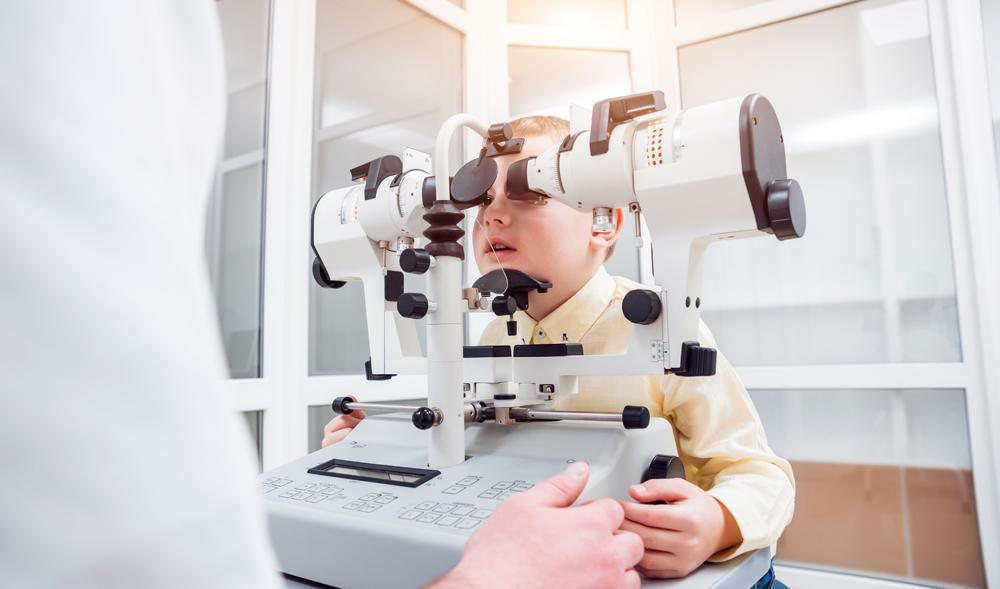Premier Eyecare Near Me: Professional Vision Services Available
Premier Eyecare Near Me: Professional Vision Services Available
Blog Article
The Role of Advanced Diagnostic Equipment in Identifying Eye Disorders
In the world of ophthalmology, the usage of innovative diagnostic devices has transformed the early recognition and monitoring of different eye problems. From finding refined adjustments in the optic nerve to checking the development of retinal diseases, these modern technologies play a crucial function in enhancing the precision and performance of diagnosing eye conditions. As the need for accurate and timely medical diagnoses remains to grow, the assimilation of sophisticated tools like optical coherence tomography and aesthetic field screening has come to be important in the world of eye treatment. The elaborate interaction in between modern technology and ophthalmic methods not just sheds light on detailed pathologies however also opens doors to customized treatment approaches.
Significance of Early Diagnosis
Early medical diagnosis plays a crucial function in the reliable administration and treatment of eye conditions. By discovering eye problems at an early phase, health care service providers can supply proper treatment plans customized to the particular problem, ultimately leading to far better results for people.
Modern Technology for Spotting Glaucoma
Innovative diagnostic technologies play an important function in the early discovery and surveillance of glaucoma, a leading reason of permanent blindness worldwide. Another innovative tool is visual area screening, which maps the sensitivity of a patient's aesthetic area, helping to spot any locations of vision loss attribute of glaucoma. These advanced diagnostic devices enable eye doctors to identify glaucoma in its early phases, enabling for prompt treatment and much better management of the condition to stop vision loss.
Duty of Optical Comprehensibility Tomography

OCT's capability to quantify retinal nerve fiber layer density permits specific and objective dimensions, helping in the early discovery of glaucoma also before aesthetic field issues emerge. OCT modern technology permits longitudinal surveillance of structural adjustments over time, promoting individualized treatment plans and prompt interventions to aid preserve individuals' vision. The non-invasive nature of OCT imaging additionally makes it a preferred option for checking glaucoma progression, investigate this site as it can be duplicated consistently without creating discomfort to the individual. Generally, OCT plays a crucial function in improving the diagnostic accuracy and administration of glaucoma, ultimately go to this website adding to much better end results for people in danger of vision loss.
Enhancing Medical Diagnosis With Visual Area Screening
A crucial component in comprehensive ophthalmic evaluations, visual area screening plays a crucial duty in enhancing the diagnostic process for various eye problems. By analyzing the complete degree of an individual's visual field, this examination gives critical details regarding the practical integrity of the entire visual pathway, from the retina to the aesthetic cortex.
Aesthetic field screening is specifically beneficial in the diagnosis and management of conditions such as glaucoma, optic nerve conditions, and various neurological conditions that can influence vision. With measurable measurements of peripheral and main vision, clinicians can spot subtle changes that might suggest the presence or development of these disorders, also before noticeable signs and symptoms occur.
In addition, visual area screening enables the tracking of therapy effectiveness, helping eye doctors tailor healing interventions to specific patients. eyecare near me. By tracking adjustments in aesthetic field efficiency in time, medical care suppliers can make informed decisions concerning changing drugs, recommending medical interventions, or carrying out various other suitable actions to maintain or enhance a person's visual function
Taking Care Of Macular Degeneration

Final Thought
In conclusion, progressed analysis devices play a crucial duty in determining eye disorders early on. Technologies such as Optical Coherence Tomography and aesthetic area testing have greatly boosted the accuracy and performance of identifying conditions like glaucoma and macular deterioration.
Report this page